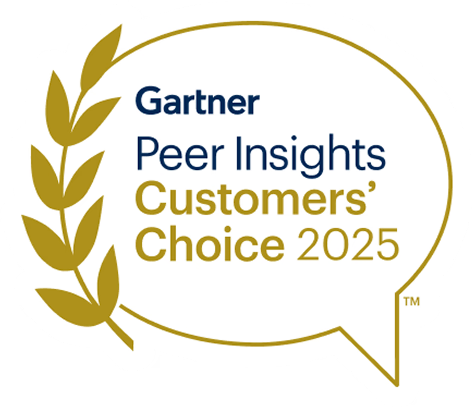What Is Shadow Data? Examples, Risks and How to Detect It
What is Shadow Data?
Shadow data refers to any organizational data that exists outside the centralized and secured data management framework. This includes data that has been copied, backed up, or stored in a manner not subject to the organization's preferred security structure. This elusive data may not adhere to access control limitations or be visible to monitoring tools, posing a significant challenge for organizations. Shadow data is the ultimate ‘known unknown’. You know it exists, but you don’t know where it is exactly. And, more importantly, because you don’t know how sensitive the data is you can’t protect it in the event of a breach.
You can’t protect what you don’t know.
Where Does Shadow Data Come From?
Whether it’s created inadvertently or on purpose, data that becomes shadow data is simply data in the wrong place, at the wrong time. Let's delve deeper into some common examples of where shadow data comes from:
- Persistence of Customer Data in Development Environments:
The classic example of customer data that was copied and forgotten. When customer data gets copied into a dev environment from production, to be used as test data… But the problem starts when this duplicated data gets forgotten and never is erased or is backed up to a less secure location. So, this data was secure in its organic location, and never intended to be copied – or at least not copied and forgotten.
Unfortunately, this type of human error is common.
If this data does not get appropriately erased or backed up to a more secure location, it transforms into shadow data, susceptible to unauthorized access.
- Decommissioned Legacy Applications:
Another common example of shadow data involves decommissioned legacy applications. Consider what becomes of historical customer data or Personally Identifiable Information (PII) when migrating to a new application. Frequently, this data is left dormant in its original storage location, lingering there until a decision is made to delete it - or not. It may persist for a very long time, and in doing so, become increasingly invisible and a vulnerability to the organization.
- Business Intelligence and Analysis:
Your data scientists and business analysts will make copies of production data to mine it for trends and new revenue opportunities. They may test historic data, often housed in backups or data warehouses, to validate new business concepts and develop target opportunities. This shadow data may not be removed or properly secured once analysis has completed and become vulnerable to misuse or leakage.
- Migration of Data to SaaS Applications:
The migration of data to Software as a Service (SaaS) applications has become a prevalent phenomenon. In today's rapidly evolving technological landscape, employees frequently adopt SaaS solutions without formal approval from their IT departments, leading to a decentralized and unmonitored deployment of applications. This poses both opportunities and risks, as users seek streamlined workflows and enhanced productivity. On one hand, SaaS applications offer flexibility and accessibility, enabling users to access data from anywhere, anytime. On the other hand, the unregulated adoption of these applications can result in data security risks, compliance issues, and potential integration challenges.
- Use of Local Storage by Shadow IT Applications:
Last but not least, a breeding ground for shadow data is shadow IT applications, which can be created, licensed or used without official approval (think of a script or tool developed in house to speed workflow or increase productivity). The data produced by these applications is often stored locally, evading the organization's sanctioned data management framework. This not only poses a security risk but also introduces an uncontrolled element in the data ecosystem.
Shadow Data vs Shadow IT
You're probably familiar with the term "shadow IT," referring to technology, hardware, software, or projects operating beyond the governance of your corporate IT. Initially, this posed a significant security threat to organizational data, but as awareness grew, strategies and solutions emerged to manage and control it effectively. Technological advancements, particularly the widespread adoption of cloud services, ushered in an era of data democratization. This brought numerous benefits to organizations and consumers by increasing access to valuable data, fostering opportunities, and enhancing overall effectiveness.
However, employing the cloud also means data spreads to different places, making it harder to track. We no longer have fully self-contained systems on-site. With more access comes more risk. Now, the threat of unsecured shadow data has appeared. Unlike the relatively contained risks of shadow IT, shadow data stands out as the most significant menace to your data security.
The common questions that arise:
1. Do you know the whereabouts of your sensitive data?
2. What is this data’s security posture and what controls are applicable?
3. Do you possess the necessary tools and resources to manage it effectively?
Shadow data, a prevalent yet frequently underestimated challenge, demands attention. Fortunately, there are tools and resources you can use in order to secure your data without increasing the burden on your limited staff.
Data Breach Risks Associated with Shadow Data
The risks linked to shadow data are diverse and severe, ranging from potential data exposure to compliance violations. Uncontrolled shadow data poses a threat to data security, leading to data breaches, unauthorized access, and compromise of intellectual property.
The Business Impact of Data Security Threats
Shadow data represents not only a security concern but also a significant compliance and business issue. Attackers often target shadow data as an easily accessible source of sensitive information. Compliance risks arise, especially concerning personal, financial, and healthcare data, which demands meticulous identification and remediation. Moreover, unnecessary cloud storage incurs costs, emphasizing the financial impact of shadow data on the bottom line. Businesses can return investment and reduce their cloud cost by better controlling shadow data.
As more enterprises are moving to the cloud, the concern of shadow data is increasing. Since shadow data refers to data that administrators are not aware of, the risk to the business depends on the sensitivity of the data. Customer and employee data that is improperly secured can lead to compliance violations, particularly when health or financial data is at risk. There is also the risk that company secrets can be exposed.
An example of this is when Sentra identified a large enterprise’s source code in an open S3 bucket. Part of working with this enterprise, Sentra was given 7 Petabytes in AWS environments to scan for sensitive data. Specifically, we were looking for IP - source code, documentation, and other proprietary data. As usual, we discovered many issues, however there were 7 that needed to be remediated immediately. These 7 were defined as ‘critical’.
The most severe data vulnerability was source code in an open S3 bucket with 7.5 TB worth of data. The file was hiding in a 600 MB .zip file in another .zip file. We also found recordings of client meetings and a 8.9 KB excel file with all of their existing current and potential customer data. Unfortunately, a scenario like this could have taken months, or even years to notice - if noticed at all. Luckily, we were able to discover this in time.
How You Can Detect and Minimize the Risk Associated with Shadow Data
Strategy 1: Conduct Regular Audits
Regular audits of IT infrastructure and data flows are essential for identifying and categorizing shadow data. Understanding where sensitive data resides is the foundational step toward effective mitigation. Automating the discovery process will offload this burden and allow the organization to remain agile as cloud data grows.
Strategy 2: Educate Employees on Security Best Practices
Creating a culture of security awareness among employees is pivotal. Training programs and regular communication about data handling practices can significantly reduce the likelihood of shadow data incidents.
Strategy 3: Embrace Cloud Data Security Solutions
Investing in cloud data security solutions is essential, given the prevalence of multi-cloud environments, cloud-driven CI/CD, and the adoption of microservices. These solutions offer visibility into cloud applications, monitor data transactions, and enforce security policies to mitigate the risks associated with shadow data.
How You Can Protect Your Sensitive Data with Sentra’s DSPM Solution
The trick with shadow data, as with any security risk, is not just in identifying it – but rather prioritizing the remediation of the largest risks. Sentra’s Data Security Posture Management follows sensitive data through the cloud, helping organizations identify and automatically remediate data vulnerabilities by:
- Finding shadow data where it’s not supposed to be:
Sentra is able to find all of your cloud data - not just the data stores you know about.
- Finding sensitive information with differing security postures:
Finding sensitive data that doesn’t seem to have an adequate security posture.
- Finding duplicate data:
Sentra discovers when multiple copies of data exist, tracks and monitors them across environments, and understands which parts are both sensitive and unprotected.
- Taking access into account:
Sometimes, legitimate data can be in the right place, but accessible to the wrong people. Sentra scrutinizes privileges across multiple copies of data, identifying and helping to enforce who can access the data.
Key Takeaways
Comprehending and addressing shadow data risks is integral to a robust data security strategy. By recognizing the risks, implementing proactive detection measures, and leveraging advanced security solutions like Sentra's DSPM, organizations can fortify their defenses against the evolving threat landscape.
Stay informed, and take the necessary steps to protect your valuable data assets.
To learn more about how Sentra can help you eliminate the risks of shadow data, schedule a demo with us today.
<blogcta-big>











.webp)
.webp)


